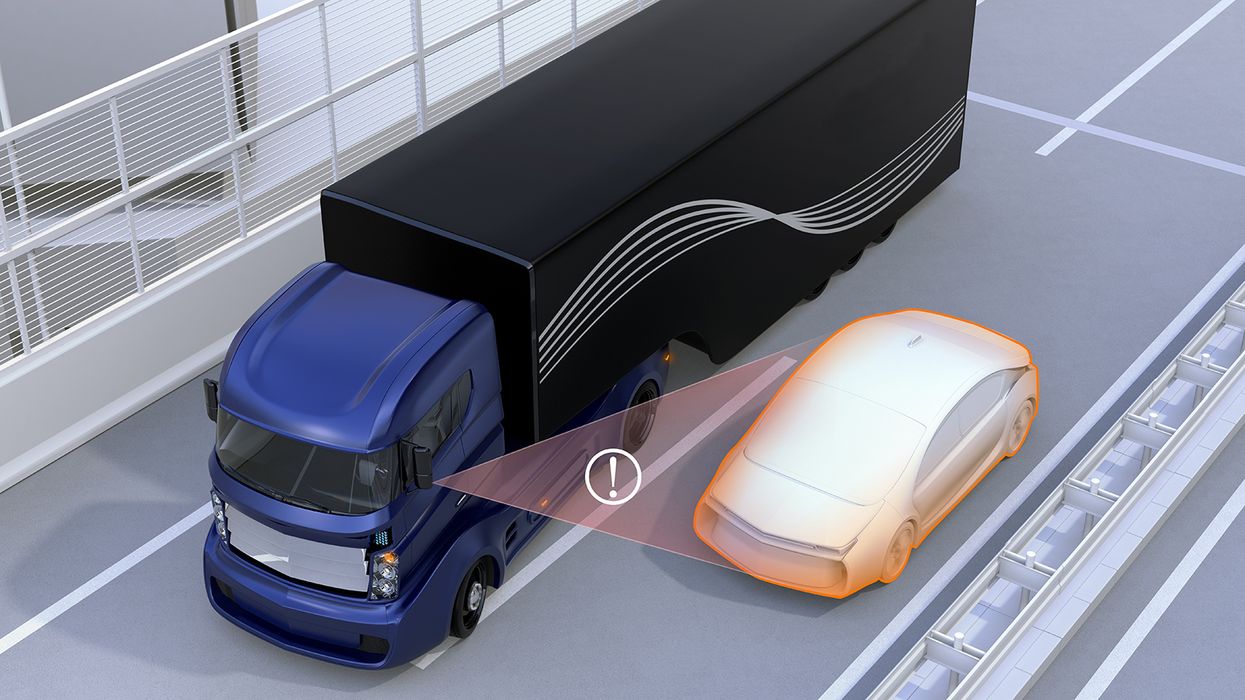An update on 3 major vehicle safety technology rules that could impact your fleet
Operators of commercial motor vehicles (CMVs), from work trucks to tractor-trailer combinations, should know the status of these three significant vehicle safety technology rules.
Capital spending plans must consider the potential impact on the cost of vehicle purchases before any of these rules take effect. Building the capability to maintain these systems must also be on the carriers' radar.
1. Automated emergency braking (AEB)
The AEB final rule is expected by April 2024 and could require these systems on new medium to heavy-duty vehicles, 10,001 pounds and greater.
As proposed, new vehicles that weigh 10,001 to 26,000 pounds, will be subject four years from the final rule. Most new vehicles, 26,001 pounds or greater, will be subject within three years since they already must have electronic stability control (ESC).
The standard would set the lowest speed at which AEB will engage, and the system would activate at or above that speed. Also, inspections and maintenance of these systems will be required under Section 396.3 of the Federal Motor Carrier Safety Regulations (FMCSRs).
Common objections to the AEB proposal are false activations and not enough has been done to address these issues before a mandate.
Carriers that operate vehicles equipped with AEB should already have technicians or vendors skilled in repairing and maintaining these systems to avoid malfunctions and downtime.
2. Safe integration of automated driving systems (ADS)-equipped CMVs
In December 2023, the Federal Motor Carrier Safety Administration (FMCSA) sent a Notice of Proposed Rulemaking (NPRM) to the Office of Management and Budget (OMB) for review. FMCSA expects to issue the NPRM by April 2024 to amend the rules to account for CMVs equipped with automated driving systems (autonomous vehicles (AVs) that operate without drivers in the vehicle). The focus is on the inspection, repair, and maintenance regulations along with requiring carriers to maintain ESC systems.
A brief history of this initiative includes:
- Advanced Notice of Proposed Rulemaking (ANPRM) - May 2019: The notice requested comments on modifying the Federal Motor Carrier Safety Regulations (FMCSRs) to facilitate the safe introduction of regulated AVs.
- Supplemental Advance Notice of Proposed Rulemaking (SANPRM) - February 2023: Comments requested pertained to:
- Data collection and reporting requirements for carriers using AVs,
- Regulatory changes in qualifications for remote operators (via controls not in the vehicle), and
- Maintenance and inspection methods of ADS-equipped vehicles.
3. Speed limiters
A hotly debated topic in recent years is the potential mandate for speed limiters on heavy-duty vehicles. A Supplemental Notice of Proposed Rulemaking is on FMCSA’s docket for May 2024. The proposal will require all vehicles rated or weighing 26,001 pounds or more with an electronic engine control unit (ECU) to be programmed to a speed limit determined by the rulemaking.
Safety groups would like the limit to be set in the range of 60-69 miles per hour range. However, detractors note that a lower limit could create an unsafe speed differential with non-CMVs and limit productivity. However, a programmed speed limit should reduce crash severity. Increased fuel efficiency is a benefit already experienced by carriers using speed-limiting technology.
Key to remember: This should be a busy year for carriers with three major vehicle safety rules expected to progress in the next two months.


































































